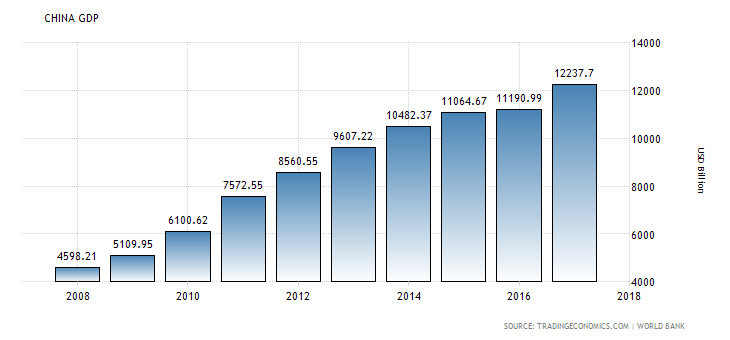China's Currency: Why is the Yuan falling?
- Soham Mukherjee
- Nov 17, 2018
- 3 min read
1. Overview: The Economy of China
Over the years, China has faced a significant shift from a centrally-planned economy to a more market-based economy. Since then, China has experienced rapid economic and social development. Annually, the GDP grows 10 percent sustaining the largest economic expansion in history by a major economy. China holds the status of the second largest economy who continues to play an active and pertinent role in the development of a global economy. Externally, the rapid growth looks appealing; however, there are many challenges China faces including inequality, environmental sustainability, and even rapid urbanization. China’s 13th Five-Year Plan (2016-2020) highlights the important changes the country will focus on, while also projecting a 6.5 percent annual growth.

2. China’s currency: Yuan
Name: Yuan
Symbol: CNY
Before we big deeper into the yuan, let’s clarify the difference between the renminbi and the yuan. Renminbi means “the people’s currency,” and the Yuan is the unit name of the renminbi currency. Hence, when referring to the price, it is said that things cost 10 yuan.
The yuan is not at its highest value right now. Currently, it is flirting with the 7 mark against the U.S. dollar, the lowest level seen since the 2008 global financial crisis. Every change in the yuan is being closely watched because the currency has major implications in the United States and China’s trade war.
When referring to the yuan, it’s pertinent to consider that the currency doesn’t work like every other currency. The Chinese central bank implements a daily guiding point which sends a signal to the market to monitor the movement of the yuan; hence, it is not freely traded. The chart below shows the amount one US dollar buys a yuan, edging closer to the 7 yuan per 1 US Dollar benchmark.

10 years ago, one U.S. dollar had the ability to buy 7 yuan, during the global financial crisis. The number 7 does not have a fundamental meaning to it, but it is a good indication of the track the yuan is following: downwards.
3. Yuan Going Down
The weakening of the yuan is due to a variety of reasons:
● Strength of the dollar: the U.S. dollar is confident in the U.S. economy currently along with the raising of the interest rates continues to strengthen the dollar
● U.S.-China Trade War: the tension about a trade war occurring is affecting China’s economy, directly causing the currency to be in this state.
● Tariffs: the fear of the U.S. implementing tariffs is not helping the situation for China because it is planned to be implemented on all Chinese imports in early December. The chart below references the major impacts if tariffs are implemented. As projected, industrial products imported from China are the largest imported goods which will be extremely affected by the addition of tariffs on Chinese imports.

● Low Domestic Trade: China’s domestic trade hit its lowest point in over a decade raising lots of speculation.
4. Bilateral Trade
The yuan has been accepted as the primary trade currency between China and Pakistan instead of the U.S. Dollar. This change will greatly alleviate some of the financial and economic strains within the South Asian allies. The yearly trade volume between Pakistan and China is approximately 15 billion, of which 13 billion are Chinese exports to Pakistan. The unprecedented decisions will go a long way in the future by strengthening the trust within the South Asian allies. Economists also say that the trade deficit between the countries will reduce pressure because now they are working with the yuan and no longer the U.S. dollar. The trade agreement is a very monumental moment in the Chinese yuan history; thus, we will see the impact as this agreement is put into action.
Overall, there were many significant changes and events occurring with the yuan which is impacting the U.S. dollar and many other currencies. This article’s purpose was to debrief on the condition of the Chinese yuan because at this point it stands at its lowest point since the last global financial crisis.
Works cited






Comments